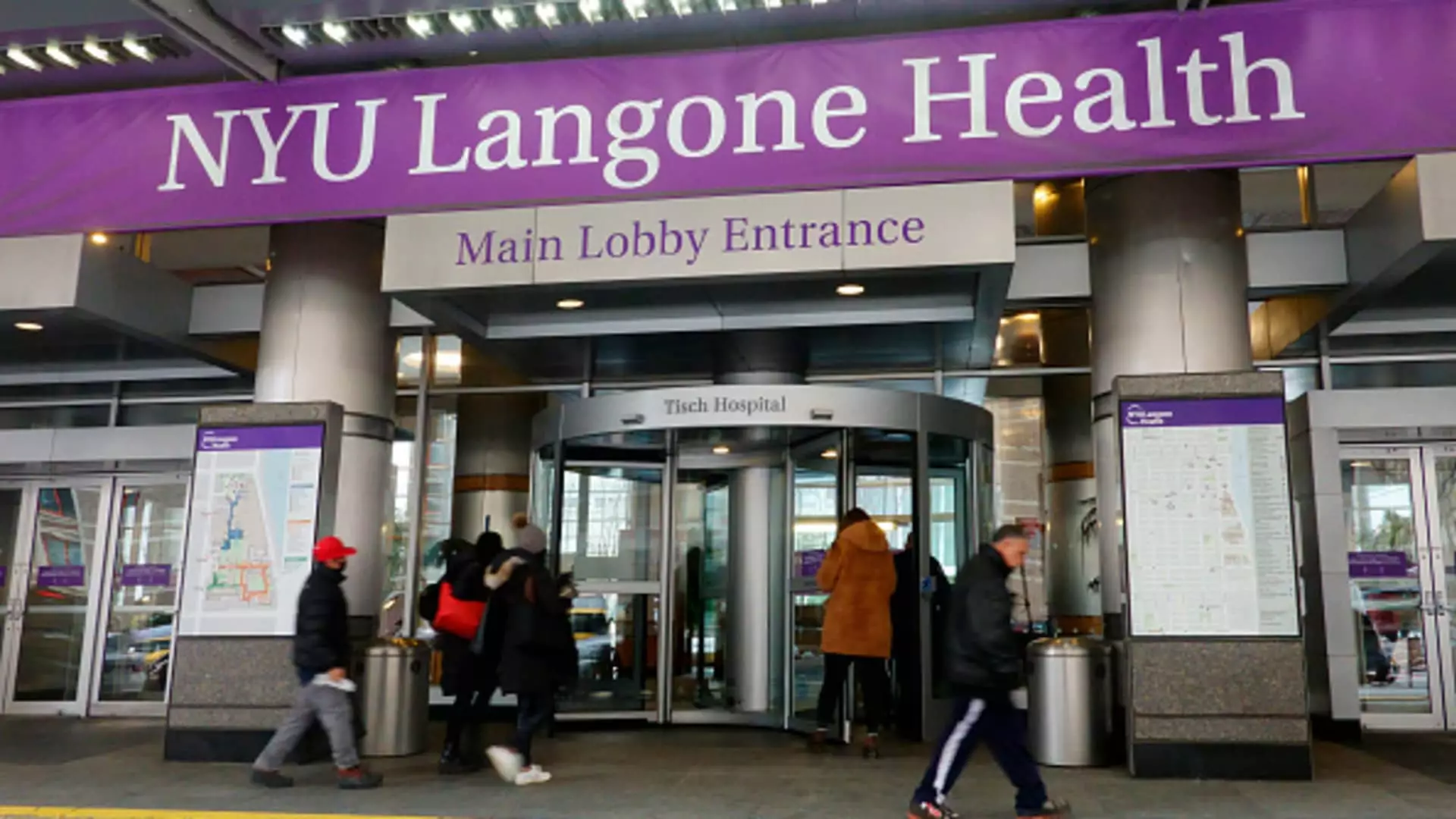In what was hailed as a revolutionary step in 2018, New York University’s Grossman School of Medicine made headlines by becoming the first prestigious medical program to offer full-tuition scholarships to every student, regardless of their financial situation. This bold initiative was intended to alleviate the long-standing burden of student debt, averaging around $200,000 for medical graduates. Yet, the fallout from this seemingly noble move has exposed a deeply troubling paradox: while the intention was to make education accessible, it may have inadvertently fortified prevailing inequalities.
The spike in applications the following year seemed like a celebration of success. However, a dissection of incoming enrollment reveals a troubling statistic: the percentage of students identifying as “financially disadvantaged” plummeted to just 3% in 2019, down from a notable 12% in 2017. The notion that removing tuition barriers would create an inclusive environment evaporates when we realize that the side effects of an increase in applicants actually skewed the admissions process toward those who can afford the luxury of educational resources. As Jamie Beaton, co-founder of Crimson Education, aptly points out, “tuition-free colleges experience surges in application numbers,” cultivating an ecosystem where middle- to high-income candidates, adept in accessing tutoring and extracurricular enrichment, dominate.
Negotiating Educational Equity: A Dismal Reality
The intent behind removing financial constraints appears noble, yet the reality is harsher. With the shift toward accessibility, one might assume that lower-income students would find relief; instead, the competition has intensified unfavorably for them. NYU spokespeople tout their initiative as opening pathways for promising future doctors, yet they overlook the stark decline in economically disadvantaged enrollments. Consequently, high-achieving students from low-income backgrounds often find themselves outmatched by their wealthier counterparts who, ironically, are leveraging the same system meant to uplift them.
Even as other elite institutions such as Harvard University adopt similar “tuition-free” policies, the game is rigged. While Harvard’s programs may relieve families earning up to $200,000 from tuition fees under the guise of “affordability,” as detailed by Beaton, they risk edging out lower-income applicants in favor of those more comfortably situated within the financial strata—a move not for social mobility but one echoing elitism disguised as altruism.
The Middle-Class Mirage: Winners and Losers
The unintended consequences of these initiatives are raising eyebrows among education experts. Christopher Rim, head of Command Education, asserts that despite intentions to support low-income students, it is ironically the middle class that stands to gain the most. These elites are not just donors; they are essential to the sustainability of top-tier institutions which need a diverse, affluent class for ongoing funding.
In this scenario, it would take a shallow understanding of economic realities to dismiss the plight of lower-income students. Reduced opportunities lead these students to face an uphill battle where middle- and upper-class individuals, entangled in a network of privilege, avidly outshine them. Educational strategies, marketed as equitable reforms, inadvertently exacerbate the very inequities they aim to dismantle.
The Financial Burden Balloon: An Arms Race
Rising tuition rates have outpaced inflation, escalating college costs to unfathomable heights. The average tuition plus room and board for a private four-year college has climbed to $58,600 for the 2024-2025 academic year. The result? A treacherous landscape where families, already struggling to manage educational expenses, must confront even more significant financial responsibilities. In a bid for prestige and expanded applicant pools, educational institutions engage in what can only be described as an “affordability arms race.” However, amid this race, the majority of colleges remain ill-prepared to sustain no-loan initiatives or equal access policies; over 95% of colleges rely heavily on tuition for their operating revenue.
James Lewis, co-founder of the National Society of High School Scholars, emphasizes that parents and students often discount potential financial aid opportunities in favor of the glaring retail price tag. It becomes clear that, in this complex web of admissions, strategic funding and resource allocation is critical in determining who successfully traverses the Ivy-clad gates of higher education.
The Stubborn Truth about ‘Affordability’ in Education
The truth is stark: well-intentioned proposals for broadening access to elite educational institutions can generate outcomes diametrically opposite to their goals. The vision of inclusivity is tarnished when student debt alleviation results in an environment where the very low-income students it sought to support become collateral damage in this educational chess game. In the end, as universities embrace a model of unbridled competition devoid of meaningful support structures, the path to a quality education remains perilously uneven—a playground where only the privileged thrive.

